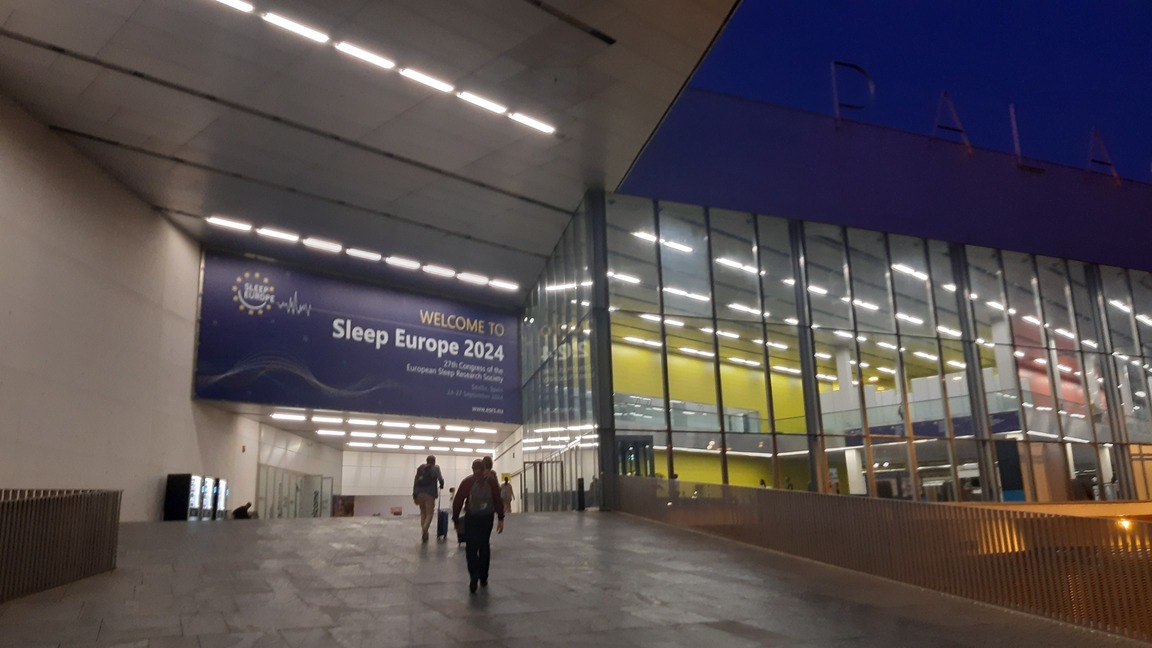Last week (24-27 September) Anne Skeldon was in Seville Spain for the 27th Congress of the European Sleep Research Society, designated Sleep Europe 2024 (link here). The event had more than 3500 participants from 80 countries. Anne ran a symposium session on “From data to clinical application: Identifying sleep and circadian phenotypes”. There were 4 speakers in the session including someone speaking about machine learning methods (Akifumi Kishi, Tokoyo), a talk on mathematical modelling (Anne), a sleep and circadian physiologist (Katharina Wulff, Umea, Swden) and a clinician (Klaus Martigny, Frederiksberg, Denmark). Anne‘s talk was on “Determining whether sleep phenotypes are driven by environmental or physiological factors by combining longitudinal data with a mathematical model”, essentially about her joint work with Derk-Jan Dijk (Director, Surrey Sleep Research Centre (SSRC)) and others including previous maths postdoc Sean Cleator and previous Dementia Research Institute funded Maths/SSRC postdoc Thalia Rodriguez (link to published work here). Anne framed their work in terms of digital-twins to help explain how we can use our mechanistic understanding, mathematical models and data to help design clinical interventions for sleep timing disorders. Anne was also invited to chair an oral session on “From Diagnostic Innovations to Environmental Influences”. The photo below shows the grand entrance to the venue.

